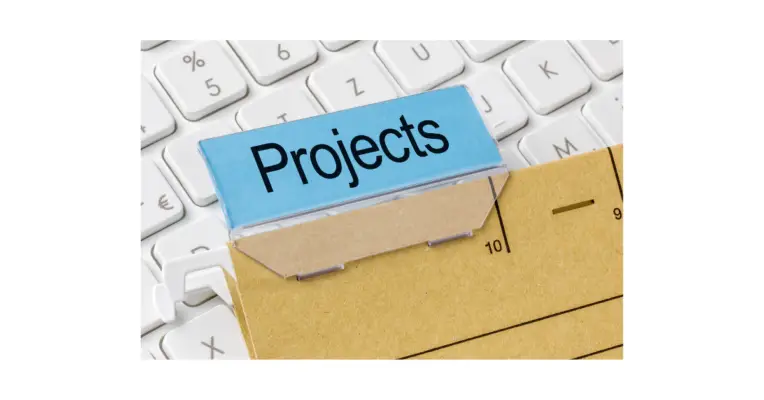Any project comes with some inherent risks, but complex projects often have a greater number and variety of risks. To manage these risks effectively, it is important to first identify them and then create a plan to mitigate or eliminate them. One way to identify risks is to create a list of potential hazards, both internal and external.
Once the risks have been identified, they can be ranked in order of importance. Once the most important risks have been identified, a plan can be created to address each one. This may involve creating contingency plans, modifying the project schedule, or taking other action to reduce the likelihood of a negative event occurring. By taking steps to identify and manage risks, complex projects can be far more successful.
Managing risks is a vital part of project management, but it can be tricky to do correctly in complex projects. There are many different types of risks, and each one needs to be handled differently. Here are some tips for managing the risks in your next complex project.
What is Risk Management in Projects?
Project risk management refers to the analysis or management of risks which arise during a project to assist with the project’s progress. Risk management is not only reactive but is part of determining the risks in upcoming projects and should also be part of an integrated planning strategy.
Any potential risk affects project schedule or performance or costs. Risk is a potentiality. When reality occurs in project management it is considered a problem and has to be resolved.
Early risk detection is crucial for effective project risk management. By identifying potential risks early on, project managers can develop plans to mitigate the impact of most significant risks. However, detecting risks can be challenging, as they often have a low profile during the early stages of a project.
One way to improve risk detection is to use a risk impact model presented for key risks. This model can help identify major risk and assess their potential impact on the project thus contributing to effective risk management. Once risks have been identified, project managers can develop success scenarios point plans to address them.

How Do you Manage Risk in a Project?
Effective project risk management is essential for the success of any truly complex project. By definition, a complex project is one that has a high degree of uncertainty and a high potential for failure. In such an environment, even the best-laid plans can quickly unravel, and small problems can quickly escalate into major disasters.
As a result, risk management practices must be an integral part of any truly complex projects. By identifying and analyzing risks early on, project manager can develop mitigation strategies that will help to keep the project on track even when unexpected problems arise. In addition, regular reviews of risks and mitigation plans can help to ensure that the complex project stays on course as conditions change over time. By managing risk effectively,project managers can increase the chances of success for even the most complex projects.
What are the five 5 methods of managing risk?
The basic methods for managing risks depends on project complexity and project goals. They include:
- Avoidance,
- Reduction
- Sharing,
- Retention, and
- Transfer
What are the 6 Major Steps of Project Risk Management?
Prioritize the Risks
No risk exists in every way. It’s critical that you assess risks to know how much resources are needed to deal with it if it occurs. You may manage it using the simple categorized risk as low or high. It’s easy to understand why we need this perspective. The high risks will apportioned resources to mitigate their impacts.

Analyze the Risk Analysis
Analyzing risks can be difficult in instances where there is no good sources of data. Clearly some data is complex but some industry types have best practices for analysis. It might surprise you to learn that companies have developed an appropriate framework for risks.
As soon as your risk assessment has been assessed, it is possible that your project could potentially have a significant impact on your business and reduce costs by reducing your exposure. Through qualitative and quantitative risks analysis your schedule and finances will change dramatically.
Identify the Risks
Detecting risk can be difficult.However,you will also need to register this information in a risk register to avoid any confusion. How do we brainstorm and communicate ?Depends with organization’s culture. Find people of appropriate experience and conduct an interview so you can collect information necessary for both identifying and addressing risks especially the root cause.
Think about things which could go wrong. Create corresponding data from historical project data. Your potential risks are increasing. Check if risk is related to the cause.

Assign an Owner to the Risk Management
To enhance risk ownership it is prudent to assign somebody to supervise risk management. It should be done if you list all the risk factors. Can anyone identify a risk and determine how and why it occurs and then lead a work towards its resolution? that’s the risk owner.
It is certainly best to give the task to the right person, but also important to ensure all risks take a responsibility.
Monitor the risks
You can’t simply use guesswork to monitor risks.The person that owns the risk has the responsibility to follow it throughout its course. Then the risk assessment should continue to be updated so that the project can be monitored and identified accurately. You will be able to arrange several meetings to deal with the risks and decide if you can communicate with them in advance. You need several communication channels.

Respond to the Risks
Each risk identified is defined in detail as part of your mitigation strategy. Your plan should include a preventive / incident plan. Risks are acted upon as you prioritize them. You get in contact with the risk owners and project team to decide how you can implement the risk management plan.
During the project planning stage in project risk management process what should be the best option if something goes wrong? It seems unproductive, but project managers know that pragmatic thinking helps prevent problems in complex projects. Problems can often arise and you must develop and execute an effective risk reduction strategy to understand how these risks are handled in a project life cycle.

Chris Ekai is a Risk Management expert with over 10 years of experience in the field. He has a Master’s(MSc) degree in Risk Management from University of Portsmouth and is a CPA and Finance professional. He currently works as a Content Manager at Risk Publishing, writing about Enterprise Risk Management, Business Continuity Management and Project Management.

